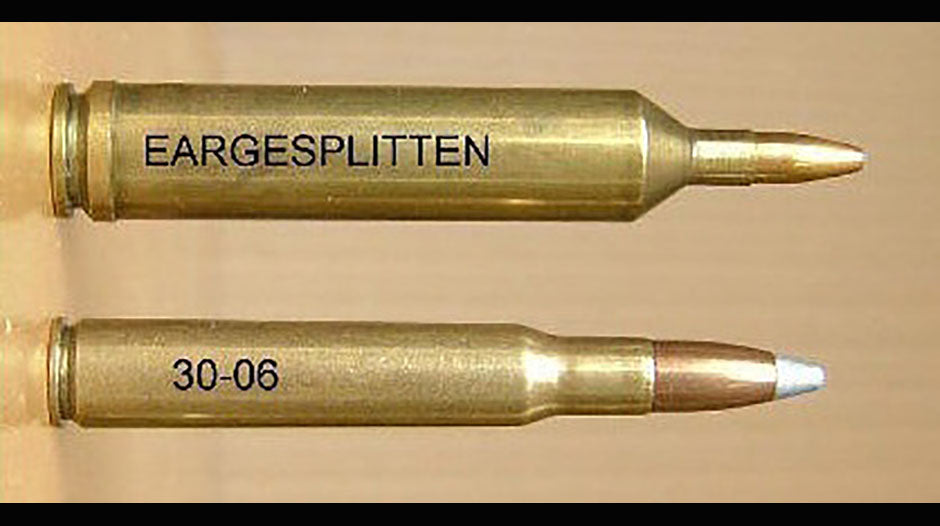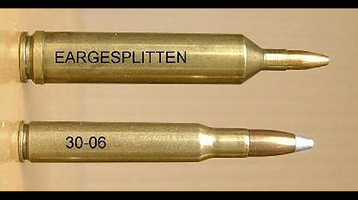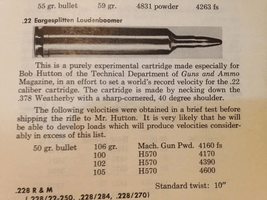mikeyp
NES Member
Dafuq? lol

 blade-city.com
blade-city.com

When it comes to funny and impractical cartridges the .22 Eargesplitten Loudenboomer may be the craziest. Not only does it have a funny name but the shell looks pretty funny as well.
The cartridge was a wildcat round designed in the 1960s by gunsmith P. O. Ackley. The entire goal with the round was to get a .22 caliber bullet to travel over 5,000 ft/s. After all his experimenting the fastest he could get the bullet to travel was 4,600 ft/s.

Ackley was not just a wildcatter, he was a researcher as well, often testing firearms to destruction in the search for information. He also produced a number of experimental cartridges, not intended to be practical, but rather to test the limits of firearms. One of these experimental cartridges was the .22 Eargesplitten Loudenboomer. This humorously named cartridge was developed by Ackley for Bob Hutton of Guns & Ammo magazine, and was intended solely to exceed 5,000 ft/s (1,500 m/s) muzzle velocity. Ackley’s loads only managed 4,600 ft/s (1,400 m/s)(Mach 4.2), firing a 50-grain (3.2 g) bullet. Based on a .378 Weatherby Magnum case, the case is impractically over-capacity for the bore diameter, and so the cartridge remains a curiosity. The advent of new slower-burning smokeless powders may have changed the equation, but in a cartridge case that routinely holds over 100-grains of powder, it is hardly worth the effort.

What in the World is a .22 Eargesplitten Loudenboomer
I scoured the internet trying to find a video of someone shooting the round but alas I came up empty-handed.

When it comes to funny and impractical cartridges the .22 Eargesplitten Loudenboomer may be the craziest. Not only does it have a funny name but the shell looks pretty funny as well.
The cartridge was a wildcat round designed in the 1960s by gunsmith P. O. Ackley. The entire goal with the round was to get a .22 caliber bullet to travel over 5,000 ft/s. After all his experimenting the fastest he could get the bullet to travel was 4,600 ft/s.

Ackley was not just a wildcatter, he was a researcher as well, often testing firearms to destruction in the search for information. He also produced a number of experimental cartridges, not intended to be practical, but rather to test the limits of firearms. One of these experimental cartridges was the .22 Eargesplitten Loudenboomer. This humorously named cartridge was developed by Ackley for Bob Hutton of Guns & Ammo magazine, and was intended solely to exceed 5,000 ft/s (1,500 m/s) muzzle velocity. Ackley’s loads only managed 4,600 ft/s (1,400 m/s)(Mach 4.2), firing a 50-grain (3.2 g) bullet. Based on a .378 Weatherby Magnum case, the case is impractically over-capacity for the bore diameter, and so the cartridge remains a curiosity. The advent of new slower-burning smokeless powders may have changed the equation, but in a cartridge case that routinely holds over 100-grains of powder, it is hardly worth the effort.

![Slap [slap] [slap]](/xen/styles/default/xenforo/smilies.vb/025.gif)
![ROFL [rofl] [rofl]](/xen/styles/default/xenforo/smilies.vb/013.gif)
